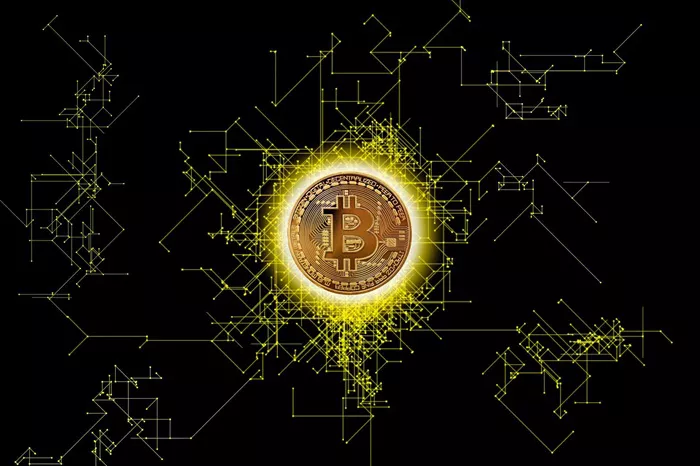Bitcoin halving is a fundamental event in the lifecycle of Bitcoin, marking the reduction in the reward miners receive for adding new blocks to the blockchain. Each halving event cuts the block reward in half, impacting the rate at which new bitcoins are generated and introducing a layer of scarcity to the digital asset. To understand the timing and implications of the next Bitcoin halving after 2024, let’s delve into the specifics.
1. What is Bitcoin Halving
Definition: Bitcoin halving refers to the process of reducing the reward for mining new Bitcoin blocks by 50%. This event is programmed into the Bitcoin protocol to occur approximately every four years, or every 210,000 blocks, as part of Bitcoin’s deflationary monetary policy.
Purpose
Control Supply: Bitcoin has a fixed supply of 21 million coins. Halving helps control the inflation rate by reducing the number of new bitcoins introduced into circulation. This gradual reduction mimics scarcity, aiming to create a predictable, deflationary environment.
Reward Adjustment: As the block reward decreases, miners must rely more on transaction fees and the potential appreciation of Bitcoin’s value to sustain their operations.
2. Historical Bitcoin Halvings
First Halving (2012)
Date: November 28, 2012
Block Reward: Reduced from 50 BTC to 25 BTC per block
Impact: This first halving event marked the beginning of a controlled reduction in Bitcoin’s inflation rate. Following this halving, Bitcoin’s price experienced significant growth, setting a precedent for future halvings.
Second Halving (2016)
Date: July 9, 2016
Block Reward: Reduced from 25 BTC to 12.5 BTC per block
Impact: This halving was followed by a notable bull run, culminating in Bitcoin’s price reaching new highs and generating increased interest in the cryptocurrency market.
Third Halving (2020)
Date: May 11, 2020
Block Reward: Reduced from 12.5 BTC to 6.25 BTC per block
Impact: The 2020 halving was accompanied by significant price appreciation, with Bitcoin reaching its all-time high of nearly $65,000 in 2021. The halving reinforced Bitcoin’s reputation as a deflationary asset.
See also: What Is The Next Big Cryptocurrency To Explode In 2024?
3. Fourth Bitcoin Halving (2024)
Estimated Date: April 2024
Block Reward: The reward will decrease from 6.25 BTC to 3.125 BTC per block
Impact and Expectations
Market Anticipation: Historically, Bitcoin halvings have been followed by periods of increased market interest and price appreciation. The 2024 halving is anticipated to continue this trend, with potential implications for both market price and miner behavior.
Mining Economics: With the reward reduced, miners will face greater economic pressure to optimize their operations or rely more on transaction fees to remain profitable.
4. Next Bitcoin Halving After 2024
Estimated Timing: The fifth Bitcoin halving is projected to occur in early 2028. This estimation is based on the average time between halvings and the number of blocks to be mined.
Block Height: The fifth halving will take place at block 840,000, occurring approximately 210,000 blocks after the fourth halving event at block 630,000.
Block Reward: The reward will decrease from 3.125 BTC to 1.5625 BTC per block. This continued reduction is part of Bitcoin’s deflationary model, further slowing the rate at which new bitcoins are introduced into the market.
See also: How High Can Bitcoin Go In 2024?
5. Implications of the Halving
Impact on Miners
Revenue and Profitability: With each halving, the block reward decreases, impacting miners’ revenue. As the reward diminishes, miners need to rely on transaction fees and potentially higher Bitcoin prices to maintain profitability.
Network Security: The economic incentives for miners play a crucial role in ensuring the security of the Bitcoin network. A reduced reward could impact the number of miners and the overall security of the blockchain.
Market Effects
Price Movements: Halvings are often associated with increased market speculation and price volatility. While past performance shows price appreciation following halvings, future outcomes may vary.
Scarcity and Demand: The reduced supply of new bitcoins due to halving events can create upward pressure on Bitcoin’s price, especially if demand remains strong or increases.
6. Long-Term Considerations
Supply and Demand: The decreasing block reward contributes to Bitcoin’s scarcity, which can influence its value over time. As fewer new bitcoins are mined, the balance between supply and demand becomes a critical factor in determining Bitcoin’s price.
Monetary Policy: Bitcoin’s halving schedule is integral to its monetary policy, creating a predictable and transparent supply curve. This deflationary approach contrasts with traditional fiat currencies and is a key aspect of Bitcoin’s appeal.
Conclusion
The next Bitcoin halving after 2024 is expected to take place around early 2028, reducing the block reward from 3.125 BTC to 1.5625 BTC. This event will continue Bitcoin’s deflationary trend, impacting miners, market dynamics, and the overall value of the cryptocurrency. Understanding the timing and implications of Bitcoin halvings provides valuable insights for investors, miners, and enthusiasts, highlighting the ongoing evolution of Bitcoin’s economic model and its potential impact on the cryptocurrency market.
Related Topics:

